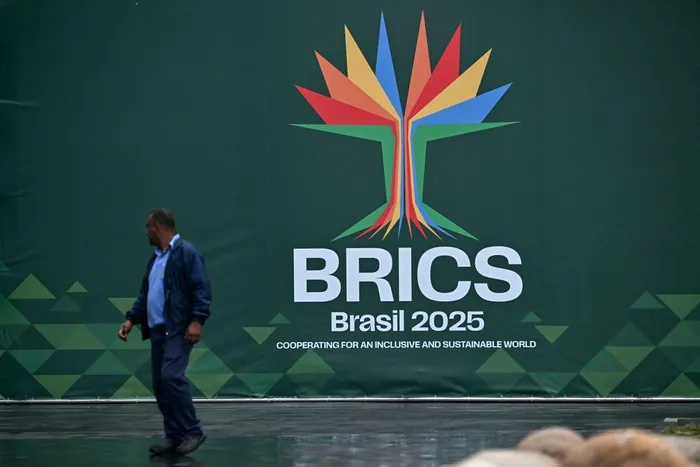Warning: Trump’s new tariffs push investors further from US
TRADE WAR

BRICS currency discussions and cross-border trade agreements as signals that the old order is under revision.
Image: Mauro PIMENTEL/AFP
Donald Trump’s fresh threat to slap an additional 10% tariff on any country backing the BRICS alliance is accelerating a decisive shift among global investors — one that’s moving capital, attention and confidence away from the United States, says Nigel Green, CEO of global financial advisory deVere Group.
“This policy announcement is confirmation of a growing narrative that the US is drifting toward economic isolation,” says Nigel Green. “Investors are reacting to that — not with panic, but with reallocation.”
Trump’s warning, issued Sunday on Truth Social, comes just days before the expiry of the 90-day pause on steep tariffs.
From August 1, higher levies will hit countries that haven’t signed trade deals with Washington. So far, only three nations — China, Vietnam and the UK — have finalised agreements. Allies, including the EU, Japan and South Korea, remain exposed.
“Tariffs were once a bargaining tool. Now they’re a permanent threat. That changes how markets view American reliability,” says Green. “We’re seeing a structural reassessment of US exposure.”
The newly expanded BRICS bloc — which now includes Saudi Arabia, Iran, Egypt, Ethiopia and others — condemned unilateral tariffs at a summit in Rio de Janeiro over the weekend, vowing to protect multilateral trade rules and accelerate cooperation across emerging markets.
“The message from BRICS is to build around the US, not with it,” says Green. “That’s a direct consequence of Trump’s strategy, and it’s setting the stage for a less US-centric world economy.”
Markets are already reflecting this realignment. The dollar index declined again on Monday, as investors weigh political friction over monetary cues.
The pan-European Stoxx 600 hovered just below neutral, while London’s FTSE 100 slipped 0.1%, and France’s CAC 40 barely moved. Germany’s DAX added 0.4% — a sign of selective positioning, not broad optimism.
Gold remains firm near $2,370 an ounce. Bitcoin has broken above $109,000 — its highest in nearly a month — as global capital seeks safety outside sovereign systems.
“This is a repositioning around resilience,” Nigel Green explains. “The flow into gold and Bitcoin isn’t about fear — it’s about building protection against political volatility, and Washington is now a central part of that volatility.”
According to IMF figures, global trade growth has slowed to just 1.8% this year. Foreign direct investment into the US fell 5.2% in Q2. Capital isn’t fleeing — but it’s recalculating.
“Washington is testing the patience of its allies and the tolerance of the market,” Nigel Green says. “And while that may work domestically, internationally it’s triggering a search for alternatives.”
For investors, the response must be deliberate.
“Waiting for clarity is not a strategy. This is the clarity,” adds the deVere CEO. “Investors are increasingly looking to avoid overconcentration in US-linked assets and build exposure to regions that are actively hedging against American pressure — especially Asia, Latin America and the Middle East.”
Green also points to the BRICS currency discussions and cross-border trade agreements as signals that the old order is under revision.
“The shift won’t happen overnight, but it’s happening. If the world starts trading less in dollars, investing less in US bonds, and building fewer supply chains through the States, that’s not a future risk. That’s a current one.”
With tariff letters set to go out and few signs of de-escalation, the fallout may intensify in the coming weeks.
“This strategy may generate short-term leverage, but it’s setting up long-term loss,” says Nigel Green.
“Washington is trying to weaponise trade. The world is responding by building its defences — and that will have lasting consequences for markets and the US and global economies.”